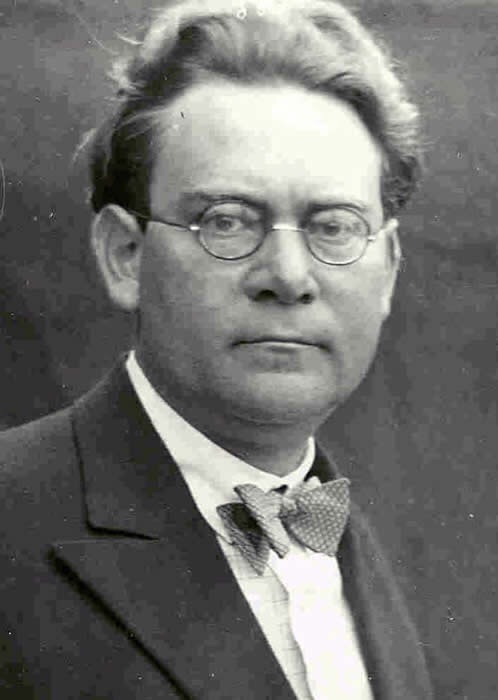The Philosophy of Space and Time (1928, tr. 1957)
Famous Hans Reichenbach Quotes
The Philosophy of Space and Time (1928, tr. 1957)
The Philosophy of Space and Time (1928, tr. 1957)
The Philosophy of Space and Time (1928, tr. 1957)
The Philosophy of Space and Time (1928, tr. 1957)
The Philosophy of Space and Time (1928, tr. 1957)
Hans Reichenbach Quotes
The Philosophy of Space and Time (1928, tr. 1957)
The Philosophy of Space and Time (1928, tr. 1957)
The Philosophy of Space and Time (1928, tr. 1957)
The Philosophy of Space and Time (1928, tr. 1957)
The Philosophy of Space and Time (1928, tr. 1957)
Instead we shall speak of the normative function of the thinking process, which can guide the pictorial elements of thinking into any logically permissible structure.
The Philosophy of Space and Time (1928, tr. 1957)
The Philosophy of Space and Time (1928, tr. 1957)
The Philosophy of Space and Time (1928, tr. 1957)
The Philosophy of Space and Time (1928, tr. 1957)
The Philosophy of Space and Time (1928, tr. 1957)
The Philosophy of Space and Time (1928, tr. 1957)
The Philosophy of Space and Time (1928, tr. 1957)
The Philosophy of Space and Time (1928, tr. 1957)
The Philosophy of Space and Time (1928, tr. 1957)
The Philosophy of Space and Time (1928, tr. 1957)
The Philosophy of Space and Time (1928, tr. 1957)
The Philosophy of Space and Time (1928, tr. 1957)
Source: The Philosophy of Space and Time (1928, tr. 1957)
The Philosophy of Space and Time (1928, tr. 1957)
The Philosophy of Space and Time (1928, tr. 1957)
The Philosophy of Space and Time (1928, tr. 1957)
The Philosophy of Space and Time (1928, tr. 1957)
The Philosophy of Space and Time (1928, tr. 1957)
The geometry of the spherical surface can be viewed as the realization of a two-dimensional non-Euclidean geometry: the denial of the axiom of the parallels singles out that generalization of geometry which occurs in the transition from the plane to the curve surface.
The Philosophy of Space and Time (1928, tr. 1957)
The Philosophy of Space and Time (1928, tr. 1957)
The Philosophy of Space and Time (1928, tr. 1957)
The Philosophy of Space and Time (1928, tr. 1957)
“Occasionally one speaks… of signals or signal chains.”
It should be noted that the word signal means the transmission of signs and hence concerns the very principle of causal order...
The Philosophy of Space and Time (1928, tr. 1957)
The sphere as a whole has a character different from that of a plane. A spherical surface made from rubber, such as a balloon, can be twisted so that its geometry changes. ...but it cannot be distorted in such a way as that it will cover a plane. All surfaces obtained by distortion of the rubber sphere possess the same holistic properties; they are closed and finite. The plane as a whole has the property of being open; its straight lines are not closed. This feature is mathematically expressed as follows. Every surface can be mapped upon another one by the coordination of each point of one surface to a point of the other surface, as illustrated by the projection of a shadow picture by light rays. For surfaces with the same holistic properties it is possible to carry through this transformation uniquely and continuously in all points. Uniquely means: one and only one point of one surface corresponds to a given point of the other surface, and vice versa. Continuously means: neighborhood relations in infinitesimal domains are preserved; no tearing of the surface or shifting of relative positions of points occur at any place. For surfaces with different holistic properties, such a transformation can be carried through locally, but there is no single transformation for the whole surface.
The Philosophy of Space and Time (1928, tr. 1957)
[Hans Reichenbach, The rise of scientific philosophy, University of California Press, 1951, 0520010558, 326]
